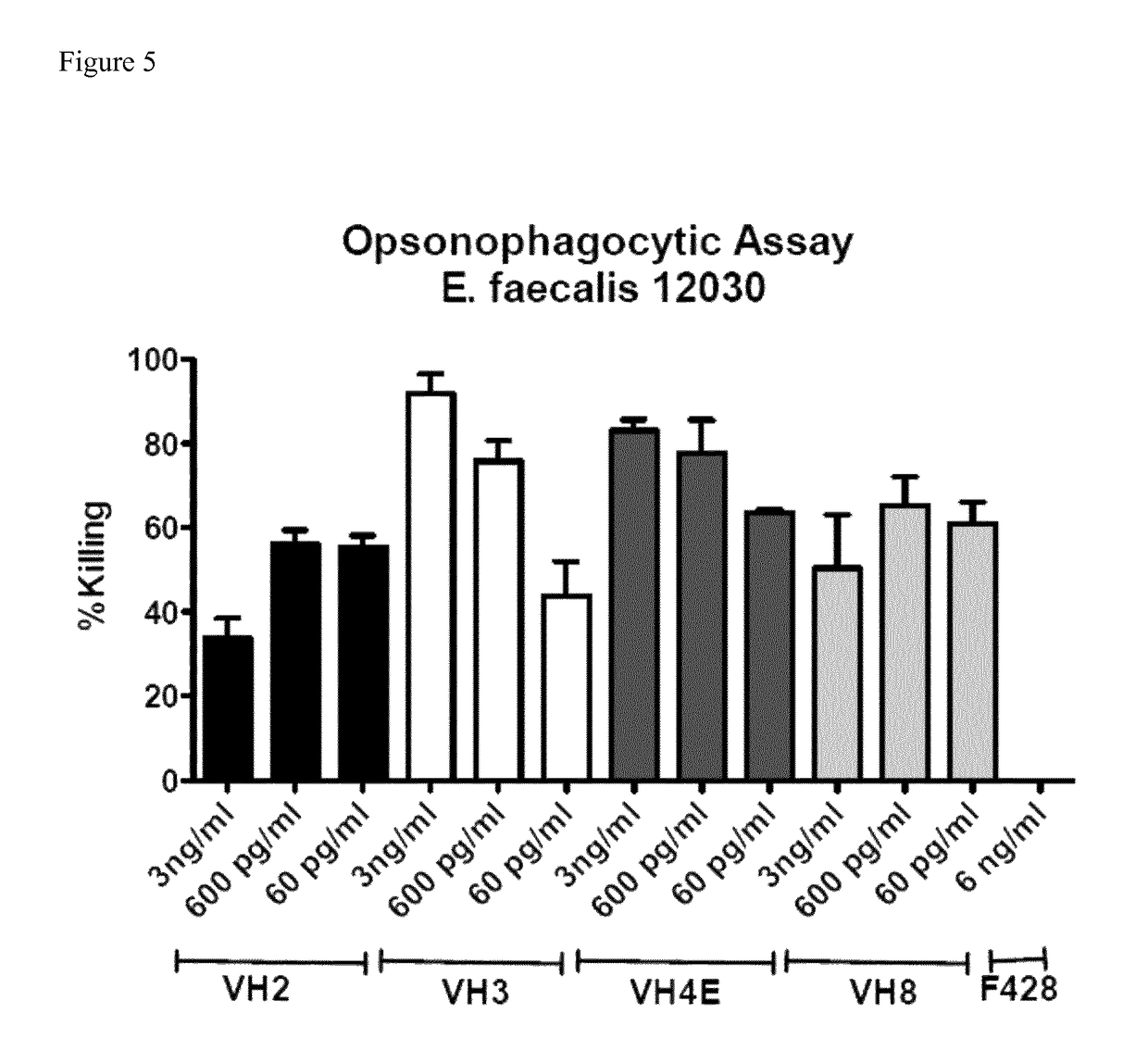Opsonic and protective monoclonal antibodies against gram-positive pathogens
a monoclonal antibody and bacterium technology, applied in the field of opsonic and protective monoclonal antibodies against gram-positive pathogens, can solve the problems of staphylococcal infections that are difficult to treat, human morbidity and mortality, and the death of bacterial infections is often rapid and inevitable, so as to enhance the phagocytosis and kill bacteria, and enhance protection
- Summary
- Abstract
- Description
- Claims
- Application Information
AI Technical Summary
Benefits of technology
Problems solved by technology
Method used
Image
Examples
Embodiment Construction
Summary
[0090]Opsonic and protective antibodies from a healthy individual were identified to target multiresistant pathogens. A pre-screen of a donor pool using an opsonophagocytic assay (OPA) with E. faecalis 12030 was used to identify the donor with the highest titers of opsonic antibodies. Ten milliliter of whole blood were taken from that donor and the B-cells were immortalized by infection with EBV. The immortalized B-cells were cultured in 48-well plates for ca. 8 weeks until sufficient numbers for RNA preparations were achieved. The supernatant of each well was collected and used in an OPA against E. faecalis 12030 to identify the well resulting in the highest killing. B-cells from this well were distributed into a new 48-well tissue culture plate. Supernatants were again tested by OPA and again the cells of the well leading to the highest killing were distributed into a new 48-well plate. After 4 rounds, B-cells in the wells with the strongest response were lyzed and mRNA and...
PUM
| Property | Measurement | Unit |
|---|---|---|
| concentrations | aaaaa | aaaaa |
| concentration | aaaaa | aaaaa |
| multidrug resistance | aaaaa | aaaaa |
Abstract
Description
Claims
Application Information
 Login to View More
Login to View More - R&D
- Intellectual Property
- Life Sciences
- Materials
- Tech Scout
- Unparalleled Data Quality
- Higher Quality Content
- 60% Fewer Hallucinations
Browse by: Latest US Patents, China's latest patents, Technical Efficacy Thesaurus, Application Domain, Technology Topic, Popular Technical Reports.
© 2025 PatSnap. All rights reserved.Legal|Privacy policy|Modern Slavery Act Transparency Statement|Sitemap|About US| Contact US: help@patsnap.com



